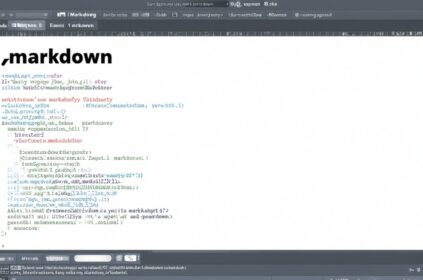In the fast-paced world of digital communication, you may come across acronyms and slang that stop you in your tracks. One such term gaining popularity across texting and social media is “ION.” If you’ve ever received a message containing “ION” and puzzled over its meaning, you’re not alone. The rise of internet shorthand has introduced new layers of nuance—and potential confusion—to everyday conversations. This article dives deep into what “ION” means in text, explaining its definition, usage, and impact. By the end, you’ll not only understand the meaning of “ION,” but also know how to interpret and use it effectively in your own messages.
What “ION” Means in the Context of Everyday Digital Communication
“ION” in text is shorthand for “in other news.” Unlike its primary meaning in science—where it refers to an atom or molecule with a net electric charge—the texting version serves as a conversational pivot. It signals a change of topic, allowing someone to shift gears without abruptness. This interpretation is crucial in informal online settings, such as texting, Twitter, or group chats.
Why It Matters for Digital Communicators
For anyone navigating digital spaces—whether friends chatting, coworkers in a group chat, or parents deciphering teenager slang—clarity is key. Understanding what “ION” means in text helps prevent misinterpretations and fosters smooth, natural exchanges. Misunderstanding this term could lead to awkward pauses or missed conversational cues, while correct usage allows for seamless topic changes and richer dialogue. It also demonstrates digital fluency, signaling that you’re in tune with evolving language trends—a valuable asset in professional and social circles alike.
How to Use “ION” in Text: Core Strategies and Practical Guidance
Successfully navigating digital language requires both knowledge and tact. Here’s how to recognize, interpret, and deploy “ION” in everyday conversations:
Recognizing “ION” and Its Intent
- Context is key: If “ION” appears between two thoughts or after a pause, it likely signals a forthcoming shift in subject.
- Tone and medium: “ION” suits casual text, direct messages, or social media—not formal emails or work documents.
Using “ION” to Pivot or Lighten the Conversation
- Transition smoothly: Employ “ION” to gently steer the conversation in a new direction, often after discussing a serious or heavy topic.
- Example: “I have a huge presentation tomorrow and I’m kind of nervous. ION, did you see the new Marvel trailer?”
Avoiding Overuse or Misplacement
- Watch frequency: Overusing “ION” can dilute its effect and make exchanges seem fragmented.
- Check relevance: Only pivot the conversation when there’s a natural opening or when the topic genuinely requires a shift.
Tools, Checks, or Metrics to Monitor Usage
- Read the room: Notice how your contacts respond—do they pick up on your new topic or seem confused?
- Keep it context-appropriate: Confirm that the medium supports informal shorthand; for example, group chats may welcome it, while client-facing messages may not.
Data & Proof: How “ION” Embodies Modern Communication Trends
Key Statistics
- A 2023 survey by Pew Research found that 67% of Americans aged 18–29 regularly use internet slang or abbreviations in texts and social media messages (Pew Research Center, 2023).
- The Oxford Languages 2022 report noted that more than 65% of messaging abbreviations in popular use originated within the last five years, underlining the evolving nature of digital language (Oxford Languages, 2022).
Implications for the Everyday Communicator
These numbers reveal a critical shift: digital shorthand like “ION” is not a passing fad but part of a larger, generational transformation in communication. For anyone involved in online interaction—personally or professionally—staying aware of terms like “ION” is now essential for clear, connected conversations.
Practical Examples of “ION” in Action
Example A: Topic Shift with Measurable Result
Setup: Jess and Taylor are texting about work stress.
Action: Jess writes, “This week was brutal, I barely slept. ION, I finally booked that vacation to Hawaii!”
Result: The mood turns lighter, offering Taylor an easy segue to respond with enthusiasm about the trip, measured by both parties’ engagement and increased message frequency.
Example B: Contrasting Use in a Group Chat
Setup: A group chat discusses weekend plans, but the conversation stalls.
Action: One participant writes, “Looks like everyone’s busy for Saturday. ION, did anyone watch the finale last night?”
Result: The chat is revived, shifting energy and prompting diverse responses. This demonstrates “ION’s” role in maintaining conversational momentum and preventing awkward silences.
Common Mistakes & How to Avoid Them
It’s easy to misuse terms like “ION” if you’re not attentive:
- Using “ION” in Formal Settings: In professional emails or official reports, slang or acronyms can seem out of place or disrespectful.
- Misinterpreting Scientific References: Some may confuse the slang “ION” with its scientific meaning, especially in academic or STEM-focused contexts.
- Overusing Shorthand: Relying too heavily on abbreviations can make messages cryptic or harder to follow for those less familiar with slang.
- Ignoring Audience: Not everyone is fluent in digital lingo; always consider the recipient’s familiarity before using “ION.”
Implementation Checklist: Confident Use of “ION” in Text
- Assess the tone of your conversation; reserve “ION” for casual, friendly settings.
- Position “ION” to clearly mark a shift in topic, ensuring relevance to previous discussion.
- Limit its use to prevent your messages from appearing scattered.
- Always consider your recipient’s familiarity with online slang or abbreviations.
- If unsure, spell out “in other news” the first time to build understanding.
- Observe responses from your contacts to gauge reception and adjust accordingly.
Conclusion: Bridging Conversations with “ION”—A Tool for Digital Fluency
Understanding what “ION” means in text is more than a vocabulary exercise—it’s a gateway to smoother, more effective digital interactions. As communication styles evolve, mastering common shorthand like “ION” ensures you keep pace, whether in lively group chats or one-on-one exchanges. Apply these insights to communicate confidently and clearly, recognizing when to pivot, how to maintain a conversation’s flow, and when to switch from slang to standard language. For anyone looking to improve digital conversations—at work, home, or anywhere in between—making sense of expressions like “ION” is a simple yet powerful step.
FAQs
What does “ION” mean in text messages?
“ION” usually stands for “in other news” in text messages, signaling a change of topic. It’s an informal way to pivot conversations smoothly.
Can “ION” mean something else besides ‘in other news’?
Yes, “ION” can also refer to ions in science—a charged particle. However, in texting and online chat, it almost always means “in other news.”
When is it appropriate to use “ION” in a conversation?
Use “ION” in casual, friendly contexts, such as texting or group chats, where informal language is the norm. Avoid using it in formal emails or professional communications.
How can I tell if someone will understand what “ION” means?
Consider your audience’s familiarity with internet slang. Younger users and those active on social media are more likely to recognize it; if unsure, clarify by writing “in other news” the first time.
Should I use “ION” at work or in professional settings?
Generally, “ION” is best reserved for informal interactions. In professional settings, using standard transitions is safer to ensure clarity and professionalism.






